Words Amicia de Moubray Photographs Amicia de Moubray, Clive Bowley and Belmont House
One of the little known architectural wonders of Faversham is the abundance of brick tiles, or mathematical tiles as they are more usually called, adorning the facades of several buildings. What is a mathematical tile? You may well ask! The late architectural historian Christopher Hussey gave a precise definition: ‘A flanged tile so made as to present when hung a vertical face which in appearance is scarcely distinguishable from brickwork.’
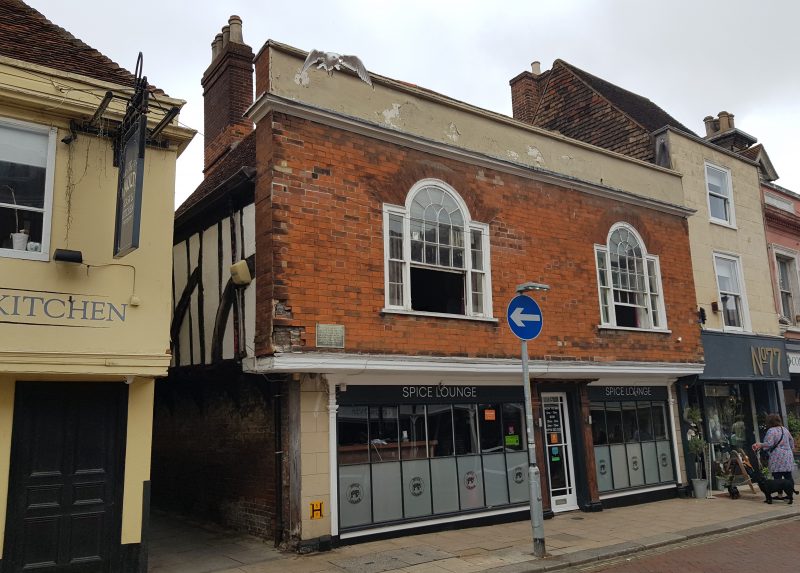
Edward Jacob, one-time Mayor of Faversham transformed his house in Preston street adding mathematical tiles, a parapet and Palladian windows
Today, these quirky architectural features are even less distinguishable than they used to be since now most of them have been painted over. Fashionable in the 18th and early 19th centuries, the tiles were an ingenious way of effecting an instant makeover – miraculously transforming timber-framed medieval buildings which often had projecting first floor storeys into restrained Georgian buildings. ‘”Correct” taste in the Georgian age required that timber-framing should be masked,’ wrote the late Alec Clifton-Taylor. There are several good examples of this practice dotted all over the town from houses in Abbey Street to several examples above some of the shops in West Street. The very best and by far away the most interesting is the former house of Edward Jacob, Mayor of Faversham from 1713-1788. An erudite fellow, he was a member of the Society of Antiquaries, a bibliophile, scientist, botanist and fossil collector.
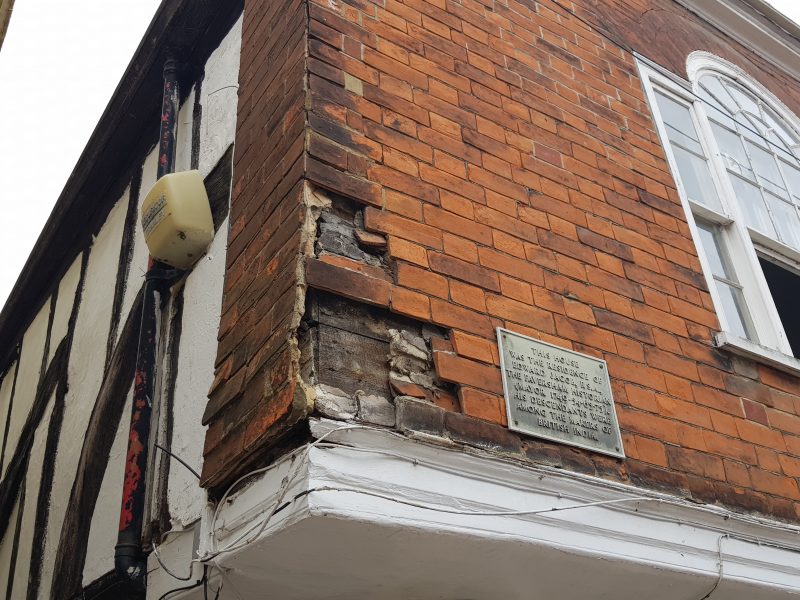
A decaying corner of Edward Jacob’s house showing how the mathematical tiles were applied
For many years Jacob lived at 76 Preston Street, now the Spice Lounge. The house originally dates from the 14th century. It was probably then a small jettied hall house with a wing attached. Edward Jacob re-fronted the house with mathematical tiles, a parapet and a handsome pair of Palladian windows. Down the passage to the left of the house, the side of the old medieval house is visible. The whole ensemble is a brilliant illustration of the role mathematical tiles played.
The fact that 30 or more mathematical buildings faced with mathematical tiles are still extant in Faversham is an indication of what a very prosperous and sophisticated town it was in the latter half of the 18th century. Perhaps everyone wanted to emulate Edward Jacob?
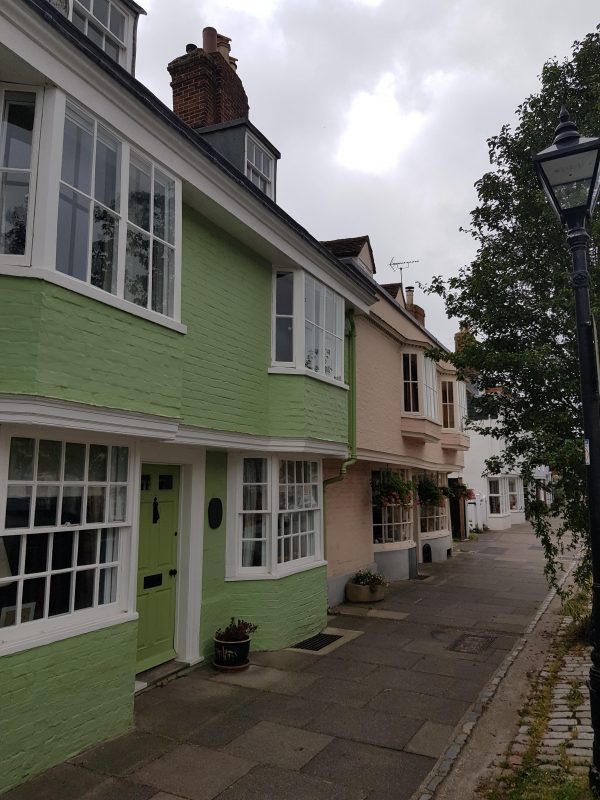
Mathematical tiles in Abbey Street
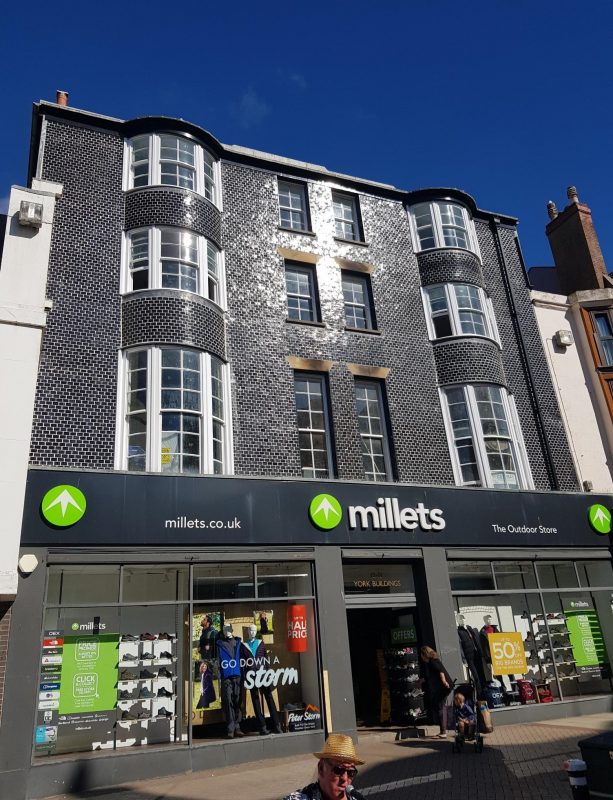
Glazed black mathematical tiles in Hastings
The origins of the description ‘mathematical tile’ are obscure: mathematical, presumably, because of something to do with their straight edges. The colour of mathematical tiles varied from region to region: in Brighton and Hastings many of the tiles were glazed black, which was thought better to withstand the ravages of salty sea air. In Kent red was initially the favoured choice. But such are the vagaries of fashion that by the early 19th century red bricks were regarded as distastefully ‘fiery’ and white bricks, as close in tone as possible to stone, were preferred.
Mathematical tiles were a trend almost exclusively confined to the main elevation of buildings and almost always in an urban setting. A fine example is the old Rigdens Brewery in Court Street, now Ask, the restaurant.
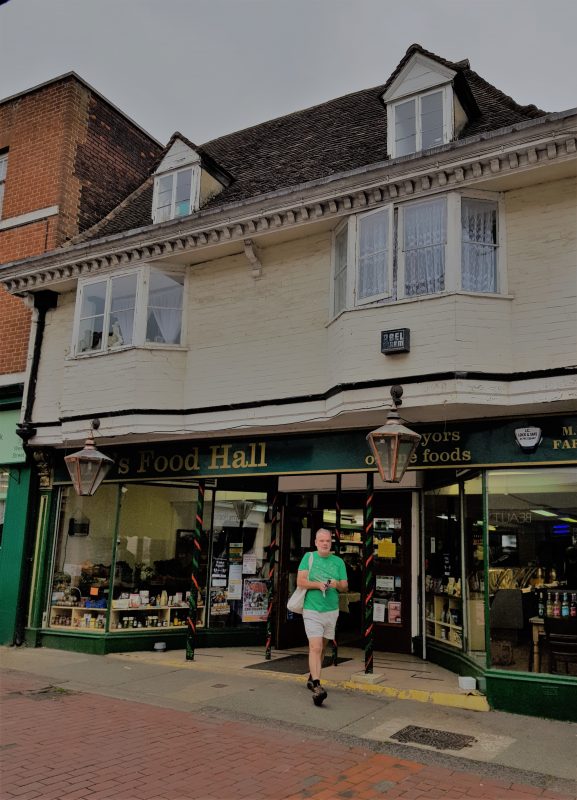
A good example of a medieval house transformed by the application of mathematical tiles
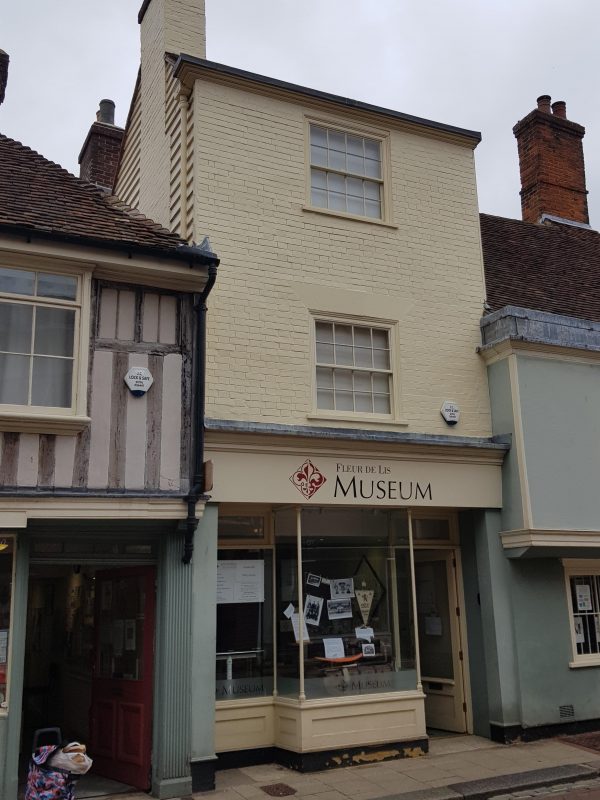
Mathematical tiles on the Fleur de Lis Museum on Preston Street
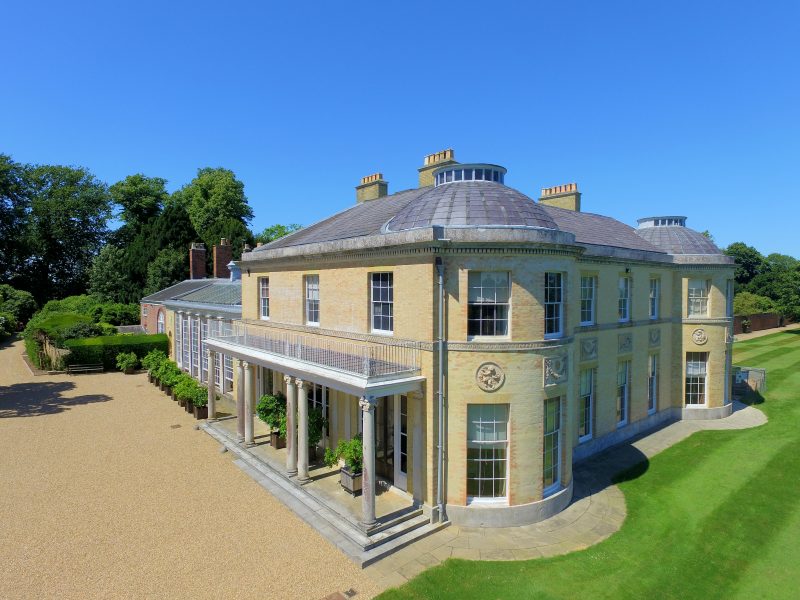
Belmont House, near Faversham, is a good instance of that rarity – a country house clad in mathematical tiles
There are a few instances of mathematical tiles being used on country houses. Heveningham Hall, Suffolk and Belmont House 1792, near Faversham, both designed by Samuel Wyatt, were faced in mathematical tiles, probably for ‘weather-tightness’, in the opinion of Christopher Hussey. In both cases ‘white’ bricks in varying shades were used.
Nearly a thousand individual buildings have been identified in England as using mathematical tiles. Of these, 85 per cent are in Kent, Sussex and Surrey, and 45 per cent are in Kent, predominantly in Canterbury and Faversham. This is hardly surprising given that the south of England was a region in which, peg tiles being widespread, there would have been many craftsmen skilled at tile hanging. It was much easier than bricklaying.
Until fairly recently it was thought that the tiles were a skilful circumvention of the Brick Tax of 1784, but there are instances of mathematical tiles before that date. The earliest example is dated 1724 at Westcott, Surrey.
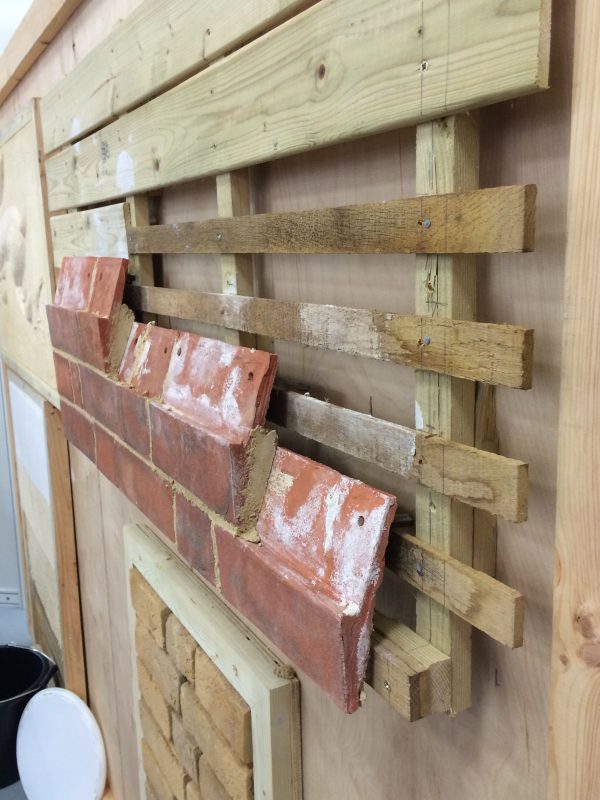
Mathematical tiles are fixed and bedded onto timber framing to create the convincing appearance of brickwork
There were two ways of attaching the tiles. If a building was wattle-and-daub, or lath-and-plaster, the entire wall was covered with softwood boarding onto which the tiles were nailed and also bedded in with lime putty. If the infilling was brick, the boards could be omitted and the tiles bedded directly onto the old fabric using plenty of lime putty and nails.
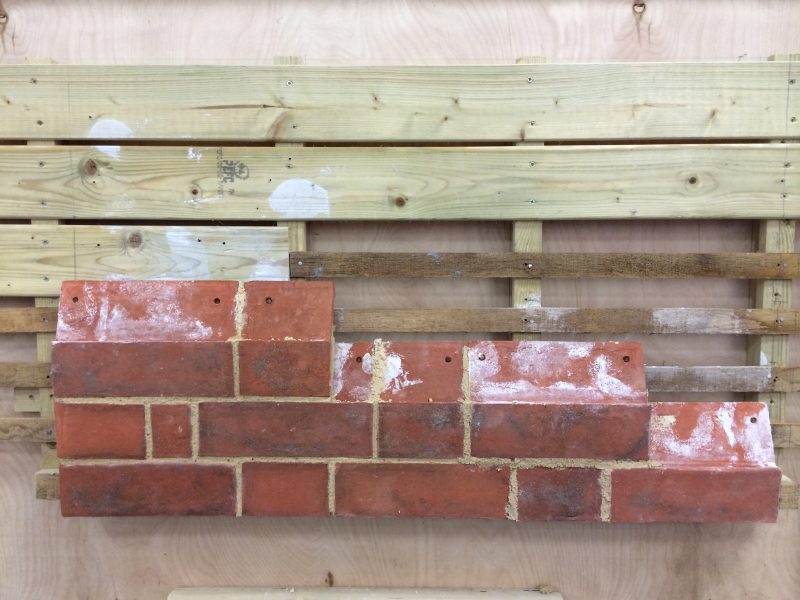
In Canterbury, a city with a maze of narrow ancient streets lined with medieval jettied buildings, mathematical tiles came to the rescue in 1787 when the Commission for Paving, Lighting and Watching decreed the removal of all protuberances of more than nine inches from the frontage of buildings due to the increased volume of traffic as a result of the industrial revolution. A new brick could measure up to eighteen inches, mathematical tiles just 1 ½ inches. Thus the tiles were a clever way of changing a façade without encroaching too far on to a street.
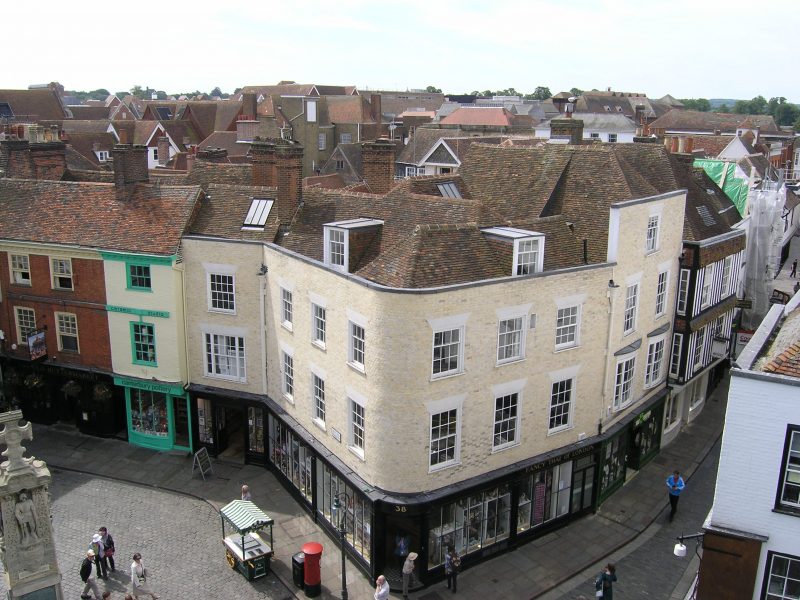
The simple ordered mathematically tiled facade of No.16 Mercery Lane/38 Burgate conceals a complex timber-framed building dating from the 15th, 16th and 17th centuries
Despite the ravages of the Baedeker Raids of World War II, at least 130 buildings with mathematical tiles survive. For further information, please see the essay in Canterbury Take Care! a report recently published by SAVE Britain’s Heritage (14.99)and edited by me.
Spot-the-mathematical-tile enhances a stroll around Faversham, Ospringe and Canterbury.